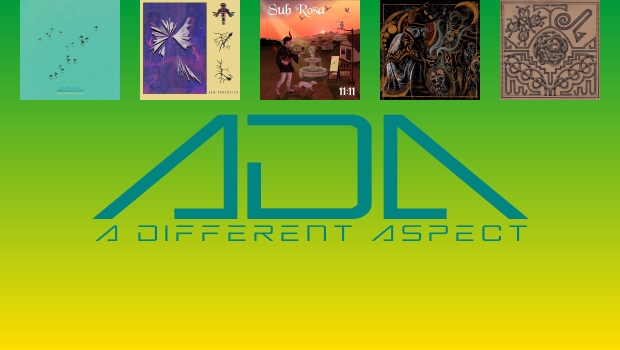Featured artists: Kaatayra | Bríi | Sub Rosa | Papangu | Caio Csizmar ||:
In this ADA (shorter reviews) album update we travel with TPA’s Nick Hudson to the Federative Republic of Brazil:
• Kaatayra – Inpariquipê
• Bríi – Sem Propósito
• Sub Rosa – 11:11
• Papangu – Holoceno
• Caio Csizmar – Decriptas
Nick Hudson
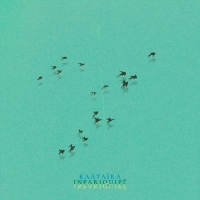
One of the most rewarding things about reviewing is having someone suggest something off the back of a review I’ve written, as it not only shows someone appreciates what I’ve written, but I’m often introduced to something I might not otherwise have discovered. In this case, my review of Maladie’s Symptoms III led someone to suggest I listen to Kaatayra’s latest (and possibly last) album, Inpariquipê. I’d never heard of this one-man Brazilian outfit, but was so enamoured by what I heard that I had to hear more. Kaatayra is a quite unique atmospheric black metal group, with each of its releases being a fusion of black metal and traditional Brazilian music. The balance between these two musical poles has swayed from release to release, making each quite different. While Inpariquipê remains rooted in black metal composition, it’s a minimal and acoustic affair that contains barely any evidence of the usual black metal tropes. Even the blast beats sound as if they’re traditional Brazilian percussion instruments played at speed. There are some harsh vocals, but they’re sparse, and not at all intrusive.
In fact, sparse describes the music well. As much as Caio Lemos, the musician behind Kaatayra, must have black metal influences, I have to wonder how much he must be familiar with composers such as Steve Reich, Arvo Pärt and Philip Glass, as this is minimalist black metal that is more atmospheric than pretty much any other band I’ve heard described as atmospheric black metal. There are quite beautiful ambient passages, and what I assume are field recordings, interspersed with the most delicate acoustic instrumentation, and layered with heavier elements that, by virtue of being acoustic, are never overbearing lay or overwhelmingly heavy, the way black metal often can be (at least, to my ears). Quite simply, I find Inpariquipê beautiful. In this respect, the cover art is a perfect representation of the contents. It’s possibly as atypical of black metal artwork as you could find.
Lemos apparently began Kaatayra to aid his mental health, and with that in mind it’s easy to understand why Inpariquipê has been described as Kaatayra’s swan song. Lemos has stated that he had a feeling Inpariquipê would be the final Kaatayra album while he was composing and recording it, and the album has transcendent and ascendant qualities, and a sense of positivity and triumph. If Kaatayra was borne out of cathartic necessity, it appears to have been efficacious. Lemos has since said that he doesn’t know if it will actually be the last Kaatayra album he makes, but I suspect that unless he needs to revisit it, he will not. Lemo has at least two other creative outlets I’m now aware of, and my guess is these will take precedence. Kaatayra has done what it set out to do. If this is the final album, it’s a magnificent farewell, and I’m extraordinarily glad I was recommended it.
Nick Hudson
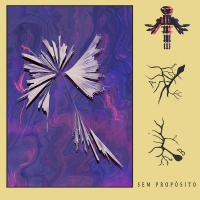
As is so often the case, discovering one new band leads very quickly to discovering two or more others. When I was recommended the 2021 release from Caio Lemos under the Kaatayra name, I found it so intriguing I had to know what else Lemos had put his name to. Lemos had three releases under three different band names in 2021, and although I enjoyed all three, it was the releases by Kaatayra and Bríi that really impressed me, with their unique takes on atmospheric black metal. With Bríi, Lemos has absolutely perfected a fusion of ambient and black metal, that sounds either improbable or a gimmick, yet is simply incredible to hear. When I first saw the description, I assumed it might be dark ambient, as I could more easily reconcile that concept with black metal in my head. But no, Bríi in no way are a dark ambient band, although they are reminiscent at times to the darkwave post-black metal sounds of bands like Alcest.
With two long form pieces titled simply for the sides of the cassette they have been released on, there is ample opportunity for Lemos to allow the music to evolve throughout the pieces. A begins with a repetitive electronic motif, as synths swirl and swell underneath. It’s certainly sounding more German than Brazilian, and as a minimalist techno beat is subtly added, I was rather unsure on my first listen how much I was going to enjoy this, or quite how the black metal elements could be added without sounding completely incongruous. This first passage carries on for about five minutes before segueing very cleverly into the first black metal passage. It’s an odd analogy, but the way this is achieved reminds me of the way Nine Inch Nails segued into Bowie during their combined tour in a very smooth and organic fashion. But as much as I love it all, where A really hits for me is around the 12-minute mark, where out of the quiet comes a plaintive guitar that slowly builds and twists and turns until it sounds positively Fripp-esque. The music gently and slowly crescendos beneath, and then bursts suddenly into the heaviest passage of the song – yet one that is not at all black metal. The vocalisations here are simply amazing!
At this point, it seems as if the song is ending at around the 17-minute mark, and it could so easily have done so, having climaxed triumphantly. There are still a good ten minutes remaining though, and the next passage is one which is preceded by the heavy ambient style Tool often uses, before the black metal blasts in again. The blast beats transition into frenetic tribal percussion, and the harsh vocals give way to chanting, before the post-black metal settles into a post-rock form for the final minutes, with some more superb and sublime guitar. The whole piece is impeccably composed, and flows beautifully. What’s more, the production is also great. None of that lo-fi aesthetic that so many one-man black metal acts go for. The mix is crystal clear, and a joy to listen to. And that’s just A. There’s still B to go. Sem Propósito provides just under an hour of music that absolutely flies by, and leaves me wanting more.
Nick Hudson

11:11 is the long-awaited follow-up to 2009’s The Gigsaw, which is an album I had a great deal of affection for. So when I listened to 11:11 and was rather underwhelmed, I wondered if it were just because my tastes have changed over the intervening years. It had been quite a while since I’d last listened to The Gigsaw, so I put that on to see if it was still as good as I remembered – and it was. It’s not that 11:11 is a bad album. It simply doesn’t measure up to the far more impressive debut. Of the founding members of Sub Rosa, only Reinaldo Jose was still a member of the band when The Gigsaw was recorded, and only he and Barbara Laranjeira remain from that album on 11:11. And perhaps this is why the album doesn’t quite hit the heights of its predecessor. There’s certainly nothing wrong with the rhythm section of Jose and Laranjeira, but the keys and guitar don’t pull the punch they need to.
Sub Rosa has always been interested in the occult, and the references to it are all over their debut and this new album. In fact, the 22 tracks of 11:11 are matched to the 22 cards of the Major Arcana in a Tarot deck Sub Rosa have designed to accompany the album. But where The Gigsaw had a dark and edgy feel to the keys and guitar, much of 11:11 simply sounds bland and banal. Where The Gigsaw sounded ancient, 11:11 simply sounds retro. What’s worst though, for me, is the production. It’s just so muddy and muffled, and doesn’t allow any of the music to breathe. I fear that perhaps Sub Rosa have paid too much attention to the detail and aesthetics of their Tarot deck than to their music. The Gigsaw is full of details that are only revealed after subsequent listens, so that it is indeed like a jigsaw, as each new piece is found.
The other problem I have is how the album jumps in style from track to track. Presumably this is deliberate, to portray the different aspects of the different cards of the Major Arcana, but it doesn’t flow very well to my ears. The Gigsaw was also eclectic in its sounds, but sounded far how cohesive, and the movements between styles was fluid and organic. The differing sounds locked into place to elucidate the greater picture that The Gigsaw ultimately revealed. The sometimes jarring changes between songs work to their detriment. And it’s a shame, because some of the songs are really good. I can’t help but think that as grand as the concept is, Sub Rosa don’t quite pull it off. The album suffers by becoming over-long, and having too many songs that just aren’t up to the standard I expect from the band. It pains me to say it, but I probably won’t be playing this again. I’ll stick to The Gigsaw, which I know and love.
Nick Hudson
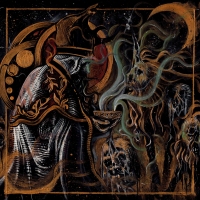
Holy crap! This album is amazing, and easily one of the most impressive from 2021. Certainly, it is the most impactful debut of 2021 that I’ve heard. If I had to pigeonhole the band, I guess I’d call them prog metal – but there is so much in their music, as can be seen from the tags they’ve used on their Bandcamp page. While not sounding really like any of these, Papangu is reminiscent to me of a melange of Magma and Mastodon, generated by Guayo and Gentle Giant, blended with Bowie and Bubu, curated by King Crimson and Kayo Dot, and overseen by Sleepytime Gorilla Museum and Shining. Honestly the sheer eclecticism of Papagnu’s sound is amazing just in the way it is all pulled together without sounding convoluted and impenetrable. The music is avant, but accessibly so.
One of the Bandcamp tags is ‘Zeuhl’, and you can certainly hear several elements of this in Papagnu’s sound – and in particular in the martial rhythms that pervade the album. However, rather than sounding otherworldly, they sound rooted to the geographic origins of the band. I’m not at all familiar with Brazilian folk music, but much of Papangu’s music sounds traditional and tribal. Even the psychedelia of their music is less from the hallucinogenic qualities of Pink Floyd and Hawkwind, than from Psilocybin and Ayahuasca. I love how much of their own culture Papangu has poured into their music, and melded beautifully with styles from across the world and across the ages. I have railed against the term world music in the past, but with Holoceno, Papangu have created some superb world music, boundless in breadth, depth and inspiration.
Holoceno is an incredibly ambitious album for a debut, and it could so easily have fallen flat on its face. Rather, it so very quickly attained an almost cult status, that only five or six months after its release, it was unsurprising to see it appearing in so many end-of-year lists. Yet, while there has been a social media storm over just how mind-blowing this debut is, it’s been largely contained to metal circles. And that’s a great shame, as while there’s no doubt much for metal lovers to get their teeth into, there’s so much more, and (particularly if you like either the French or Japanese brands of Zeuhl) plenty for adventurous listeners willing to give this band a listen. The execution of Papangu’s confluence of sounds and styles is exceptional and flawless, the musicianship is of a very high level, and the album has beautiful production. This is the sort of innovative album that the phrase “it shouldn’t work” was made for. But it does. It works in a magnificent and addictive way, and I can’t wait to hear what the band comes up with next. Given this debut was seven years in the making, I rather hope I don’t need to wait that long…
Nick Hudson
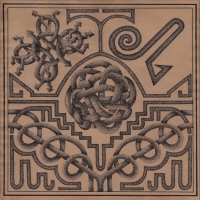
Caio Csizmar is a Brazilian composer, multi-instrumentalist and producer who released his debut EP in 2020, and followed it up with his debut album last year. Decriptas is an experimental and avant mix of classical, free jazz, and prog rock that is quite charming and beautiful, despite being off kilter and odd. The use of chamber prog in avant music is not new, but Csizmar’s approach is. The music often seems relatively simple, but can be surprisingly layered and labyrinthine. This makes sense, when you consider that the album title translates to ‘Decrypt’, and each of the song titles are named for logical processes that can be used to solve problems. Indeed, Csizmer provides a cipher with the CD of his album for which he is offering a prize to the first who solves it. As per the Bandcamp blurb, this is music “for lovers of experimental, dense, Brazilian art rock and for lovers of enigmas, cryptography, history, codes and mathematics”.
Perhaps we need those logical processes of the titles to decipher the music within, as they sound more chaotic than logical, especially within the rhythms and pulses (or should that be polyrhythms and polypulses?), as the long-form nature of the pieces allows for many changes. Of course, the more one listens to the album, the more it reveals, and the easier it is to comprehend. The depth and density of the music makes Decriptas an immersive listening experience that is increasingly rewarded with each repeated listening. As a multi-instrumentalist, Csizmar is clearly incredibly talented, and all instruments are played at a very high level, but my favourite is probably the drums. I love the drumming on this album so much! So much of this album is led by the rhythms and changing time signatures of the drums, and they are played with a great deal of panache and passion.
I have to also mention the vocals, which are quite wild, reminding me of a lot of the Italian avant music I listen to. At times the guitars and keys are reminiscent of classic Italian prog bands, too (rather than the usual suspects from the UK), and if I didn’t know any better, and wasn’t paying close enough attention, I could easily believe this was the music of an Italian artist, rather than Brazilian. Perhaps this is simply one more charade from Csizmar, from an album of charades and puzzles, or perhaps it’s a nod to the fact that the logical processes of the titles all come from the Old World – an allusion to the area and era, that can also be seen in the album’s cover art. I might think I were reading too much into it, if it were not for Csizmar overtly stating that “the concepts of logic that give the tracks their title […] are present in the structural development and character/elements of the pieces, in the lyrics and in the cover art.” I’m not claiming I’ve decrypted Decriptas, and nor am I ever likely to. For me, the enjoyment is in the enigma.

